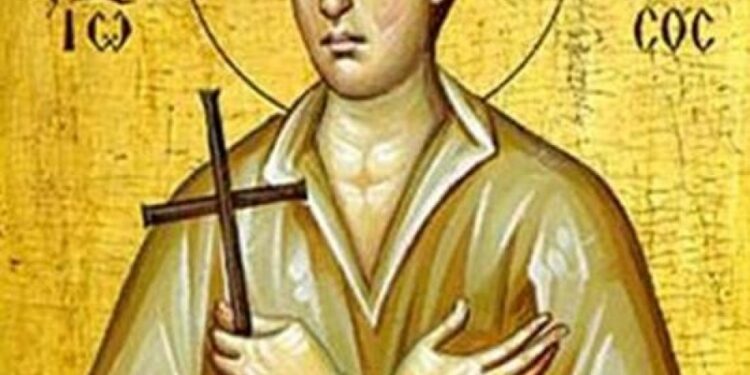John was born in Ukraine to Orthodox parents. Others claim that he was born in Poltava and others in a small village in the Mariupol region, near Azov, an area that had been turned into a scene of conflict from the 15th century until the First Russo-Turkish War in the early 1700s.
According to written testimonies, John was born in 1690 and, when he became adult, he was recruited to the tsar’s army. During the Russo-Ottoman War of 1710–11, he was taken prisoner, along with thousands of other Russians, by the Tatars who sold to slavery Turkish aghas.
He was sold as a slave to the governor of Cappadocia, Prokopios. The young slave refused to convert to Islamism and insisted on sleeping at the stable “without a bed but with his heart steadfast to the Holy Spirit.”
He fell ill and, feeling that his end was near, summoned the priest in order to receive the Holy Communion. The priest Theodoros Papadopoulos, fearing the fanaticism of the Turks, hid the Holy Communion in an apple so as not to be seen.
John fell asleep in the Lord. The Turkish agha, as a sign of respect, placed a valuable carpet on the coffin. The first cycle of John the Russian’s life ended with his burial in a Christian cemetery on May 27, 1730.
According to tradition, the priest who offered the saint the last Holy Communion saw him in a dream in November 1733. Saint John told him that his body remained incorruptible, that they should dig it up, and that he would be their patron from now on.
The priest told about his vision to the Christians who lived at Procopius’ home, and they exhumed the relics. It was then discovered that John’s body was indeed incorruptible. Apart from that, there was another sign that something different, something beyond human, was going on in Prokopi. It is said that a light from heaven illuminated the tomb and “was visible to Christians and Muslims.”
The holy relic was transferred to Saint Georgios, the church that the faithful had built by carving the rock. Then, while the fame the fragrant and miraculous relic of the saint exceeded the limits of Asia Minor, the relic was placed in the newly built temple dedicated to Basil the Great. Eventually, the relic was transferred to the temple built in his memory, placed in a reliquary, and for decades venerated by locals, either Christians or Muslims.
The ill, the possessed and the distressed came to pay their respects hoping that they soon will be cured.
From year to year, the Church of Saint John became a place of common prayer for Turks and Christians, who, when they asked for his intercession, they offered tamata (votive offering).
After the Asia Minor Catastrophe and the resulting compulsory population exchange, the inhabitants of Prokopi of Cappadocia had to leave, and settled in the area between Agia Anna and Mantoudi, in the village of Ahmet Agha, in Evoia, which was renamed Neo Prokopi. The relics of the saint were placed and kept in the Church of Saints Constantine and Helen until May 27, 1951. On May 27, 1951, the relic was transferred to the church that was built in honor of St. John, and is kept inside a silver reliquary to this day.















